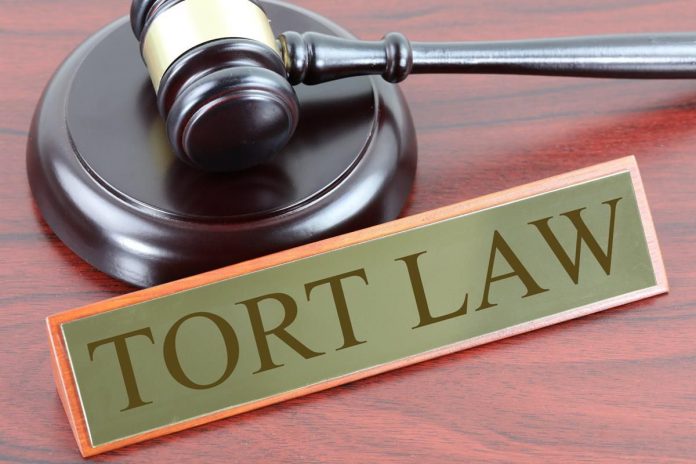This article is written by Vaibhav Sachde, pursuing a Certificate Course in Introduction to Legal Drafting: Contracts, Petitions, Opinions & Articles from LawSikho.
Table of Contents
Introduction
“Real rights are a result of the performance of duty” Mahatma Gandhi’s famous quote from his first book, Hind Swaraj, is extremely effective in the field of law because it implies that whenever a specific right is granted, it is always accompanied by a duty. From this, it is critical to understand that one person’s duty is another person’s right. For example, each Indian citizen has the right to freedom of movement, and it is our responsibility to ensure that this right is exercised properly; otherwise, the right will be abused, defeating the purpose of the right. Similarly, the right to the enjoyment of one’s property entails a duty of care toward the surrounding environment and people, which is why the tort of strict liability was established to protect such rights and to enforce such duties. After years of this provision, a new one was added as a supplement to address the need for stricter regulation in the industrialization and globalisation eras. Thus, with the development of strict liability, the tort of absolute liability was introduced. Absolute liability is one in which the duty is breached despite the lack of fault on the part of the right holder. However, this no-fault liability applies only in limited circumstances where the activities conducted pose a constant threat to society. Following the 1986 oleum gas leak in Delhi, when strict liability was deemed insufficient in certain circumstances, absolute liability became a part of Indian tort law.
In this article, we shall try to understand absolute liability and learn why and how this liability was introduced in the Indian legal scenario. Further, we will be examining the effects of absolute liability on the landmark case of the Bhopal gas tragedy and the passing of the Public Liability Insurance Act, 1991.
Absolute liability : concept and origin
Absolute liability refers to the legal liability under tort and criminal law in various jurisdictions worldwide. While finding its origin it is seen that Justice Blackstone was the first to coin the term “absolute liability.” However, in England, the house of commons and later the house of lords favoured ‘Strict Liability’ over absolute liability. In India, tort law is largely based on English tort law, which is itself based on the principles of English common law. Thus, India adopted the strict liability rule from the English case of Ryland vs. Fletcher. After its use for a long period of time, when P.N. Bhagwati analysed the case of Ryland vs. Fletcher in deciding on the ‘Oleum gas leak’ case, it resulted in the invocation of exemplary damages through the establishment of absolute liability, which was not even recognised by English courts.
The primary reason for its establishment overtime was the inadequacy of strict liability. In essence, absolute liability can be defined as strict liability without exceptions. Under the rule in Ryland vs. Fletcher, the concept of strict liability included exceptions such as the act of God and the opposing party’s negligence as defences to the strict liability principle. And further, the rule of strict liability in India is that even if the person is not negligent or did not cause any intentional harm, he could still be liable under the rule when there is an escape of dangerous things in the practice of non-natural use of land. There are certain exceptions to the principle of strict liability, like, Act of God, consent of the opposing party, statutory authority, the act of third party and the opposing party’s negligence. Therefore, in order to establish a non-exhaustive liability for businesses dealing with hazardous substances, absolute liability was established in India. That is because, to avoid liability for the devastation caused by hazardous industries developed in and around densely populated areas, they invoked an exception to the strict liability rule.
For instance, if a substance that causes damage escapes due to an act of a stranger, such as sabotage, there is no tort under the strict liability rule. However, the rule of absolute liability applies when an enterprise engages in a hazardous or inherently dangerous activity and harm occurs to anyone as a result of an accident while conducting that hazardous or inherently dangerous activity. For instance, in the event of the escape of poisonous gas, the enterprise dealing in such gas is strictly and absolutely liable to all those harmed by the accident, and this liability is not subject to any exceptions applicable to the tortious principle of strict liability under the Ryland vs. Fletcher rule. Such an enterprise owes the community an absolute and non-delegable duty to ensure that no one is harmed. Such an enterprise must conduct its operations safely, and in the event of a loss, the enterprise must be fully liable to compensate for the loss. The enterprise cannot assert that it exercised all reasonable care and that no harm occurred as a result of its negligence. In the case of absolute liability, the quantum of damages is also different than in the case of strict liability. The deep pocket theory is used in absolute liability to determine the amount of consumption.
The need for absolute liability in India
After understanding the origin and meaning of absolute liability as a concept we will look at the need for absolute liability in India when there was no such concept in English common law which India followed for its tort law structure. So, for this, we first need to look at the case in which the concept of absolute liability was established in India.
The case of the Oleum gas leak
M.C. Mehta v. Union of India arose as a result of an oleum gas leak at the Shriram Food and Fertilisers Ltd. complex in Delhi. The case started when a social activist lawyer, who originally petitioned for the closure of Shriram Industries on the grounds that it manufactured hazardous substances and was located in a densely populated area of Delhi. On 4th and 6th December 1985, while the petition was pending, oleum (O3S-Fuming Sulphuric acid) gas escaped due to a leak in a particular area of Delhi, killing an advocate Practising in the Tis Hazari Court. Many others were also affected, causing widespread distress.
Following that, the Delhi Legal Aid and Advice Board and the Delhi Bar Association filed applications for compensation in response to M.C. Mehta’s original petition. When these applications were filed, the Court stated that while it is undoubtedly true that the petitioner could have amended the writ petition to include a claim for compensation, the applications for compensation cannot be dismissed simply because he did not. These compensation claims were being made in order to enforce the Constitution’s fundamental right to life, which is enshrined in Article 21 of the Constitution.
The Apex Court then established the rule of absolute liability y, under which liability would arise for the damages caused without regard to any of the exceptions that come with the principle of strict liability. The Supreme Court held that, despite its stringency, the strict liability rule was insufficient in modern times due to scientific advancements making modern industries even more dangerous and hazardous. We gained a new principle of “absolute liability” for owners of hazardous substance industries as a result of P.N. Bhagwati’s judgments.
It was a watershed decision that added a new dimension to the field of legal liability in the Indian context. Under the absolute liability rule, those who cause damage will bear unlimited liability for adequately compensating victims. India’s courts have applied this rule in numerous instances to serve as a deterrent. This holds the enterprise liable for any damages or consequences incurred as a result of the inherently dangerous activity being conducted. As a result, it will also require such industries to provide safety equipment to their employees to avoid any mishaps, while protecting their interests and providing them with a refined, safe working environment.
The Bhopal gas tragedy case
In India, the principle of absolute liability developed primarily as a result of the Bhopal gas tragedy. The tragedy occurred in 1984, just prior to the oleum gas leak. Between the terrifying nights of 2-3 December 1984 in Bhopal, Madhya Pradesh, it was discovered that more than 27 tonnes of methyl isocyanate and other poisonous deadly gases had leaked, transforming the city into a gas chamber. The methyl isocyanate (MIC) gas was released from a Union Carbide India Ltd. (UCIL) pesticide manufacturing plant. UCIL is a subsidiary of Union Carbide Corporation (UCC), a multinational corporation headquartered in the United States of America.
There were allegations that the accident occurred because the majority of safety-measure systems were inoperable and those that were were unable to avert the disaster. as none of the plant’s six safety systems were operational, and Union Carbide’s documents demonstrate that the company designed the plant using unproven’ and untested’ technology and cut corners on safety and maintenance to save money. The toxic gas release engulfed the entire city, killing thousands of people and injuring nearly 1.5 lakh. Its devastating effects were passed onto future generations. Individuals were afflicted with a variety of ocular, respiratory, gastrointestinal, reproductive, and neurological conditions. Pregnant women who underwent abortions, had premature deliveries, and gave birth to infants with fetal abnormalities were among the injured, and the danger to their health is still present.
The Indian Government filed a case against UCIL in the United States Supreme Court in February 1985, and the case was transferred to India in 1986 on the grounds of forum non conveniens. During that time period, the 1985 Bhopal Gas Leak Disaster (Processing of Claims) Act empowered the Central Government to act as the sole representative of the victims to expedite justice in light of the high volume of petitions filed. However, rather than following the law, the government chose an out-of-court settlement with UCIL for a full and final settlement of $740 million, as well as limiting UCIL’s liability for all civil and criminal claims. This settlement was widely criticised, and a number of review petitions were filed with the Supreme Court challenging the settlement order’s validity.
The order was criticised primarily because the compensation agreed upon was insufficient for all victims and the absence of a reopener clause would preclude any future claim against UCIL. All of these contentions were rejected by the Supreme Court in its October 3, 1991 judgment, which upheld the validity of the settlement order except for the clause quashing criminal proceedings. One of the major issues surrounding this tragedy was the issue of absolute liability, and the rule of absolute liability was established in preference to strict liability. The UCC’s defence of sabotage was rejected, and the M.C. Mehta v. Union of India principle was applied.
Being completely liable forces the party to plan for the worst-case scenario, even if it is highly improbable, reducing the likelihood of any mishap to zero. Even if the company adhered to its stated policy of taking all necessary precautions, they bear responsibility. When applied correctly, this principle not only serves as a deterrent to businesses from taking adequate precautions against unforeseen events but also makes them fully liable for any resulting accident. If the settlement order had been upheld, UCIL would have been held accountable for the sufferings of each and every victim of this tragedy, as well as compelled to provide necessary and adequate compensation, thus satisfying the concept of proportionate justice. By establishing this principle in this case, it is possible to conclude that the principle of absolute liability evolved in India primarily as a result of the awakening caused by the Bhopal Gas Leak Tragedy and the ‘Oleum gas leak’ case.
After examining the cases and analysing the court’s decisions, it is clear that as India started developing industrially and economically, an increasing number of industries and factories emerged. Many of them dealt with hazardous substances, posing a threat to society and the environment. As previously demonstrated, when damages were caused to society as a result of negligence or even without fault, the liable individuals escaped through strict liability exceptions or were required to pay a small amount of compensation under the strict liability rule. Thus, in order to change this, a stronger liability had to be established. This became apparent, particularly in India, because India experienced one of the worst disaster nights in history on the 2nd and 3rd of December 1984, when the Bhopal gas tragedy occurred. This was the world’s worst industrial disaster, killing thousands of people and wreaking havoc on people’s health to date. It raised public awareness about the importance of social protection and the need for industrial owners to exercise due diligence. Following that, a case was filed for the gas leak, and while the case was still pending, and oleum gas leak occurred in Delhi, causing havoc throughout the country. In that case, stricter rules were necessary, as strict liability alone was insufficient to punish these large companies and compensate society. Thus, the oleum gas leak case marked a watershed moment in India’s absolute liability regime.
As seen above, in order to make the industrialists compensate the victims for the loss caused to them and to prevent them from evading their responsibility due to the exceptions available under strict liability, it was important to establish the principle of absolute liability. This also brings us to a point where we need to see how the principle of absolute liability is more suited in case of environmental damages:
- In the case of absolute liability, the discharge of anything dangerous does not have to be from your land; it is also applicable to those injured outside the premises, which aids in the administration of justice.
- In the case of strict liability, the rule applies only when the use of land is non-natural, whereas, in the case of absolute liability, the rule applies when the use of land is natural as well as non-natural. This improves people’s protection in all circumstances.
- Compensation must be proportional to the size and capacity of the enterprise in absolute liability. This section establishes that the greater the size and prosperity of the enterprise, the greater the compensation that must be paid. Thus, in the case of absolute liability, exemplary damages are awarded, whereas, in the case of strict liability, compensatory damages are awarded. This will indeed benefit the public welfare and provide adequate punishment for the wrongdoer.
Strict liability was adopted from a 120-year-old case because society had changed significantly and environmental protection was necessary as a result of industrialization. As a result, a rule was required that was compatible with the social and economic structure of contemporary society, and thus the rule of absolute liability was applied.
Implementation of absolute liability in India
After establishing the necessity of such liability, we must examine how it was implemented in the Indian context, as the tort of absolute liability was established differently in India than other torts, as seen before it was not derived from English law. Even in the ‘Oleum gas leak’ case, Bhagwati. J states that “We have to develop our law and if we find that it is necessary to construct a new principle of liability to deal with an unusual situation which has arisen and which is likely to arise in future on account of hazardous or inherently dangerous industries which are concomitant to an industrial economy, there is no reason why we should hesitate to evolve such principle of liability merely because it has not been so done in England.”
This concept was necessary as per the Indian scenario because the exemptions under strict liability were misused to skip the liability. Following adoption, it was observed during implementation that the principle of absolute liability was viewed as a tool for preventing mass destruction or avoiding mass mortal danger. However, in subsequent cases, courts applied this concept whenever and wherever the well-being of any individual was at stake, which resulted in courts upholding absolute liability in the case of a single death without mass destruction of property or pollution of the environment.
Effect on the Public Liability Insurance Act, 1991
The oleum gas leak and the Bhopal gas tragedy not only resulted in the introduction of absolute liability in Indian tort law but also in the adoption of numerous measures to ensure its proper and effective application, such as the passage of one of the most important acts for claimants of absolute liability, the Public Liability Insurance Act, 1991.
This Act was enacted with the primary goal of providing immediate relief to victims of accidents involving hazardous substance handling following the implementation of absolute liability. The act accomplishes this goal by establishing a fund for public liability insurance that can be used to compensate victims. According to the Act, anyone who engages in inherently dangerous or hazardous activities should have insurances and policies in place that cover him against liability and provide compensation to victims in the event of an accident or injury. This liability is based on the strict liability and absolute liability rules (also known as “no-fault liability” principles). The term “inherently dangerous or hazardous substance” refers to any mixture, preparation, or substance that, due to its properties, can cause serious harm to humans, animals, plants, property, or the environment. Additionally, if a substance is inherently dangerous or hazardous due to its handling, the defendant faces absolute liability.
The Vizag gas leak case
Even though we have seen such great progress in the implementation of absolute liability. The recent case of the Vizag gas leak raises a question on this because the terrifying gas leak during the times of pandemic disrupted the living of people therein.
The case occurred when On May 7, 2020, a polymer factory owned by LG Polymers India Private Limited released Styrene Gas, killing eleven persons and injuring thousands more. The leak was alleged to be the result of the company’s failure to meet the compliances entailed in the ‘Manufacture, Storage, and Import of Hazardous Chemical Rules 1989,’ which in effect requires a company to maintain certain emergency plans for preventing onsite and offsite damages to the plant and its surroundings. After inspecting and analysing the location in issue, the National Green Tribunal (NGT) took Suo moto cognizance of the occurrence and formed a five-member committee to submit a report on the event.
According to the tribunal’s interim order, the industry was only required to obey the consequences of the Polluter Pays Principle and the strict liability principle. And in the final judgment, it was held that the relevant business needs to pay Rs. 50crore in damages, the NGT ruled that the company is only strictly responsible for the harm it caused. It reaffirmed the rationale for using just one principle, saying that the Polluter pays Principle is fully within Indian jurisprudence and may be expressly applied to the industry in this instance to guarantee environmental protection.
As we have seen above the use of absolute liability, we can establish that it would be more justified if the court would have applied the principle of absolute liability in the present case based on the ‘Oleum gas leak’ case. This is because as we know the basic necessity to establish absolute liability is the presence of the hazardous substance and under Rule 2(e) and Entry 583 of Schedule I of the Manufacture, Storage and Import of Hazardous Chemical Rules 1989, Styrene Gas is clearly understood as a hazardous gas. Further, it can be well established from the facts of the case that the gas escaped the company’s facilities, causing casualties and other broad problems in its area, thus satisfying the criterion of harm caused by the dangerous chemical. It also damaged the environment since it was revealed that the business had been disregarding environmental control rules, which consequently played a role in the leak. This all deducts us to establish that the case facts satisfied all the necessities of absolute liability and thus clearly making a case under absolute liability and not strict liability.
Moreover, it is an explicit violation of Section 17 of the NGT Act, 2010 because the National Green Tribunal Act of 2010 has completely embraced the idea of absolute liability and requires the Tribunal to use this even if the catastrophe was caused by an accident. It solely accepts absolute or no-fault responsibility. That is, a hazardous business is responsible even if the disaster was an accident and not the result of the company’s carelessness.
Conclusion
In India, the evolution of absolute responsibility from strict liability was a watershed moment in tort law, and the oleum gas leak case is a landmark judgment in the history of the Indian judiciary. In India’s industrialization period, there was a need to preserve both the environment and the people.
Industrialization cannot be accomplished at the expense of the environment or human life. Prior to the advent of absolute liability, it was common for defendants to walk away unscathed from major catastrophes due to unnatural or unexpected circumstances or the lack of mens rea. To meet necessary fairness in such instances, absolute liability evolved. This phase aided in resolving a slew of issues that arose as a result of unexpected incidents. The regulation addresses not just compensation and economic losses, but also the severity of environmental problems. As the environment is the most critical factor that sustains human existence on Earth, and each individual has a right to a safe and healthy environment. It is true that development is impossible without change, and therefore it is essential to adapt any rule that falls inactive as a result of societal alteration. In the court, a gradual approach is essential, as was the development of absolute responsibility.
While the development of responsibility is unquestionably a significant advancement in Indian legislation, but its execution remains inadequate even three decades after its inception. As a result, progress is required in implementing the concept in order to justify its adoption of absolute liability in the Indian context.
References
- https://indiankanoon.org/doc/1486949/
- http://docs.manupatra.in/newsline/articles/Upload/2D83321D-590A-4646-83F6-9D8E84F5AA3C.pdf
- http://www.legalservicesindia.com/law/article/1236/5/Absolute-Liability-In-Indian-Context
- https://www.britannica.com/event/Bhopal-disaster
- https://www.scconline.com/blog/post/2020/06/03/vizag-gas-leak-rs-50-cr-deposited-by-lg-polymers-to-be-appropriated-towards-its-part-liability-in-restoration-of-environment-and-compensation-to-victims-erring-officers-of-andhra-authorities-need/
Students of Lawsikho courses regularly produce writing assignments and work on practical exercises as a part of their coursework and develop themselves in real-life practical skills.
LawSikho has created a telegram group for exchanging legal knowledge, referrals, and various opportunities. You can click on this link and join:
 Serato DJ Crack 2025Serato DJ PRO Crack
Serato DJ Crack 2025Serato DJ PRO Crack











 Allow notifications
Allow notifications



